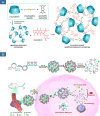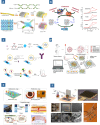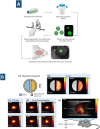Revolutionizing healthcare with nanosensor technology
- PMID: 41113577
- PMCID: PMC12529066
- DOI: 10.1039/d5ra04412j
Revolutionizing healthcare with nanosensor technology
Abstract
Modern healthcare is constantly evolving due to the inclusion of many smart technologies. Nanotechnology, since its inception, has tremendous influence on this transformation. With an emphasis on healthcare applications, the current review explores recent advancements in nanomaterial-based biosensors. The tunability of nanomaterials provides control over the chemical, mechanical, thermal, and electrical properties, thus presents nanotechnology as a more promising solution to develop smart sensing, monitoring, and diagnostics. The synergistic effects and regulated interaction with a variety of bioanalytes spurred the advancements of nano empowered devices with high selectivity and sensitivity. With a focus on common nanomaterials e.g., metal and metal oxides, graphene and polymer-based nanomaterials, the review comprehensively discusses fundamentals of nano enabled biosensors and their classification based on methods of detection. Insight has been provided exploring the potential of various types of nanomaterials harnessed in the development of pioneering sensor designs in recent times. Along with addressing the current limitations, future prospects are discussed to redefine the landscape of nanobiosensors.
This journal is © The Royal Society of Chemistry.
Conflict of interest statement
There are no competing interests to influence the work reported in this paper.
Figures













References
-
- Majidah S. Rizalputri L. N. Ariasena E. Raditya A. N. Ropii B. Salsabila N. Handayani M. Hartati Y. W. Anshori I. Nanocomposites. 2024;10:125–137.
-
- Arivazhagan M. Mohan B. Jakmunee J. Green Anal. Chem. 2024;10:100127.
-
- Kangarshahi B. M. Naghib S. M. Discov. Appl. Sci. 2024;6:47.
-
- Hashem A. Hossain M. M. Marlinda A. R. Mamun M. A. Sagadevan S. Shahnavaz Z. Simarani K. Johan M. R. Crit. Rev. Clin. Lab Sci. 2022;59:156–177. - PubMed
Publication types
LinkOut - more resources
Full Text Sources

